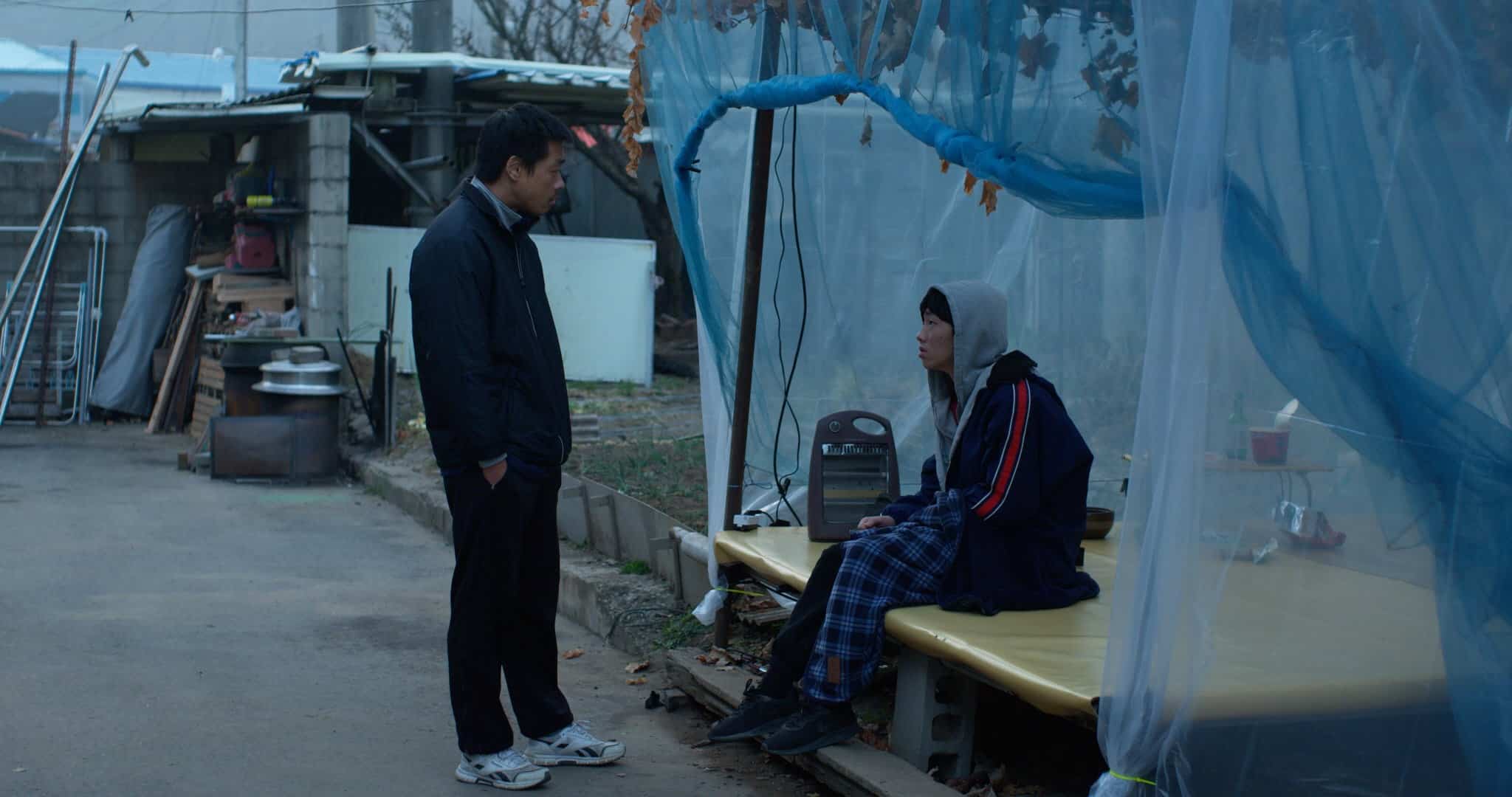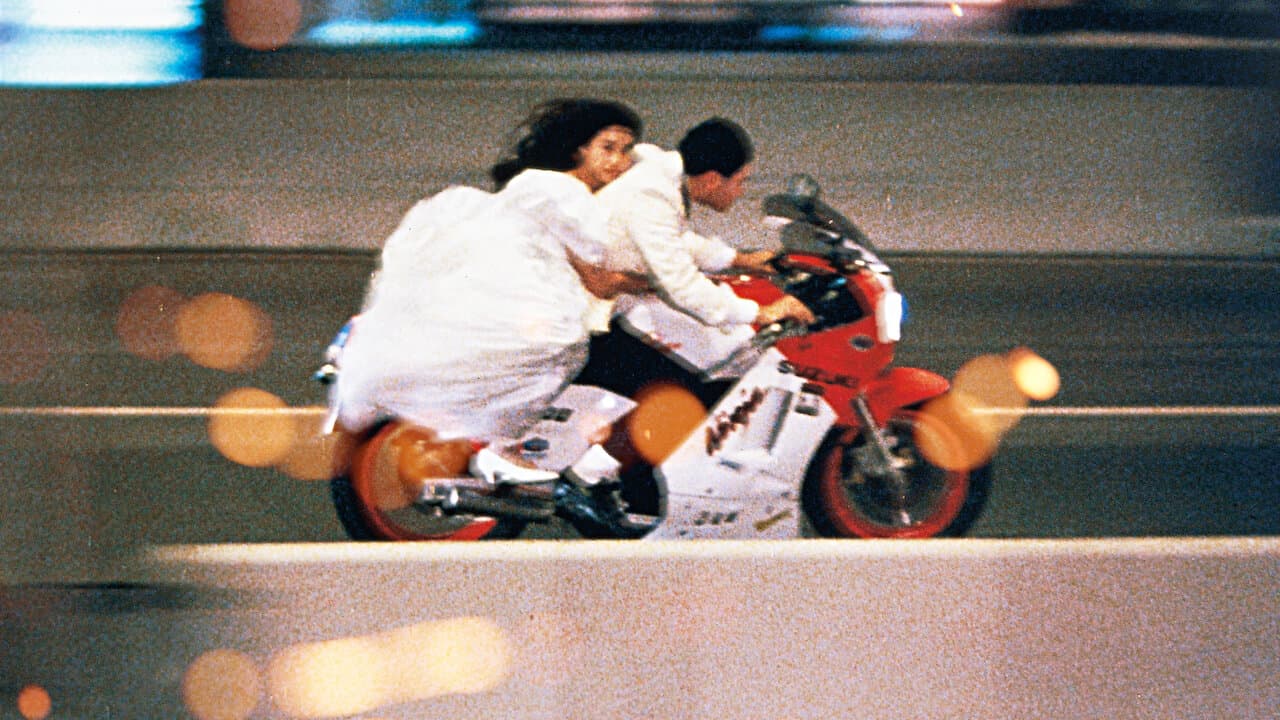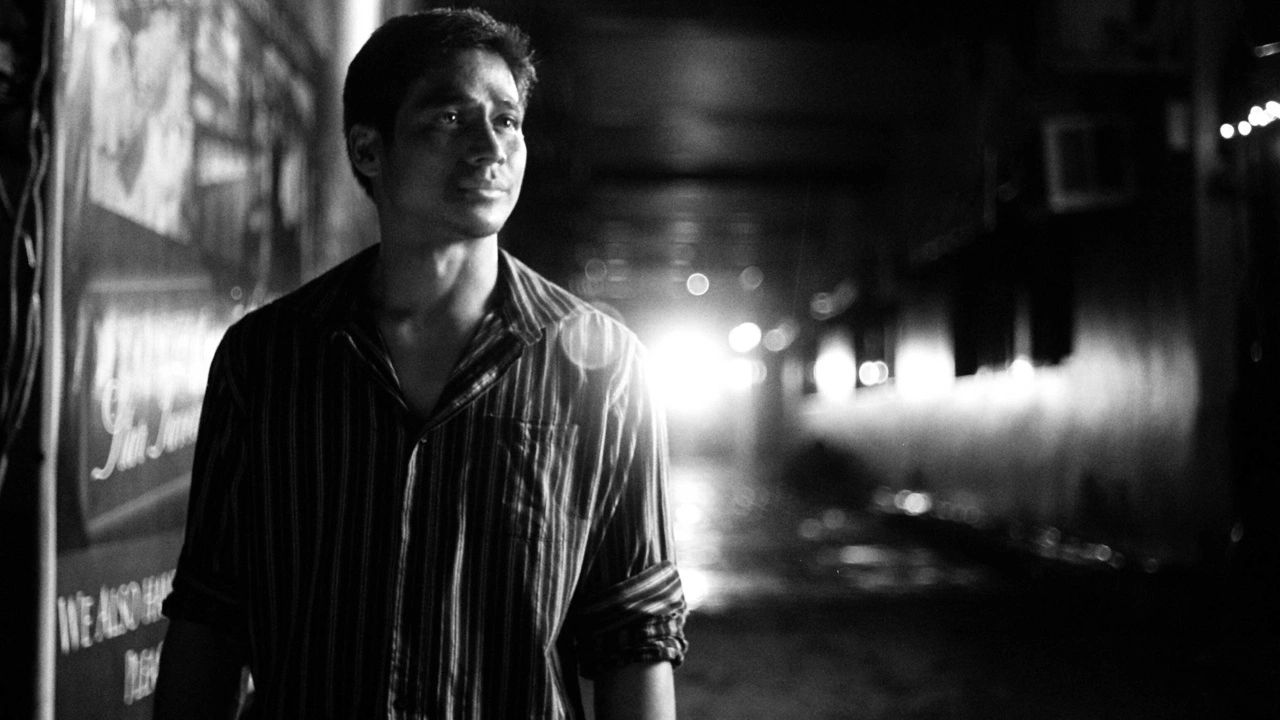Adolfo B. Alix Jr. (1978, Philippines) is a prolific director who makes several films a year. His first feature, “Donsol” (2006), was honoured with special jury prizes at film festivals in Japan and the United States, and was the Philippines' official entry to the 2007 Academy Awards, Best Foreign Language Film category. He also works as a screenwriter for film and television. He has also served as member of the international jury of the Busan International Film Festival in 2013 and the Shanghai International Film Festival in 2014. Alix has been listed by The Hollywood Reporter in its “Next Generation Asia 2010″, which features the top 20 young entertainment personalities in the region deemed “the best and the brightest among their peers” from a vast region considered “the world's biggest entertainment market.” His most renowed films include “Adela”, “Death March” and “Dark is the Night”.
Benjamin Alves (1989, Guam) is a Filipino actor and model. He started his acting career in 2007 on TV, and he continued on cinema, with roles in films like “Guni-Guni” and Lovi Poe. He is quite prolific, having acted in 40 different titles as of now.
Solenn Heusaff is a Filipina-French VJ, actress, TV host, model, singer, fashion designer, painter, and professional make-up artist. She started her acting career in 2011, with “My Valentine Girls” and her credits include films like “Yesterday, Today, Tomorrow”, “Love is Blind” and “Flotsam”.
On the occasion of their film “Mystery of the Night” screening at Fantasia 2019, we talk with them about the colonial period in the Philippines and its consequences, the Aswang, the cast, shooting in a forest in the dark, the brutal final sequence and many other topics.

Why did you choose to have a film that takes place in the colonial period?
Adolfo Alix: The film is based on a play and when I read it was set during that time, I realized I was interested in that time period because of the interplay of the physical setting of the film the fantastic elements. It is like, in the time of colonization, in a time when people were oppressed, out comes a creature that is out for revenge. These were the two things I was attracted to because I like the idea of how you can play with those things, because it is grounded on something that happened in the Philippines, Therefore, people can say, “it can be fantastic but is also something that could happen to us”, because a lot of Filipinos are very superstitious. I like to play with that material, I liked how the story progressed.
What is your opinion about this era for the Philippines?
Adolfo: I think it was very difficult for the people living during that time, because at the time of colonization, the Philippines islands were separated from each other, each one had its own culture and traditions, so when the Spaniards came and tried to colonize them, everything changed. Therefore, the Filipinos now have a very different sense of culture from what the “pure” Filipinos used to have. It is quite interesting, especially for me because we were colonized not just by the Spaniards, but also by the Japanese and the Americans, it makes you question what the true Filipino is, because now it is a little bit of everything.
Why did you choose the folklore of Aswang?
Adolfo: It was in the play, but I guess I was interested in it because, every one of us, when we were young, we were told stories of the Aswang and it is one of the most popular creatures in Philippine mythology. Growing up, I saw a lot of Aswang films, I heard all types of urban legends about the Aswang. So, when I read the story, I thought that this is an origin story, of how the Aswang came to be and I thought that it would be interesting for my generation and also for the younger generation. Because we know about the creature, but if you asked me before how she came about, I could not answer. Now, I have an answer.
Benjamin Alves: It is nice to humanize something that we grew up to be scared of and to see that it can have a human aspect, like thinking, “Oh, she did have a human heart”. Because, when I was growing up, the Aswang was just a lady who wants to eat kids and in order to kill her you had to put salt on its body. Therefore, I knew how to kill her (laughter) but I did not know how she came about, so it was nice to learn about that.
Adolfo: It is about humanizing the monster. For example, you see Frankenstein, and you know he is out to kill people but you know where he came from and how he became Frankenstein and you think, “Now I understand how he became such a monster”.
Solenn Huessaff: You also know that the manananggal came from the darkness within people, because of how people are, how hypocritical they can be. It can be also perceived as a subtext for humans in general, who we are and can be sometimes.
Benjamin: Because, to be honest, the character in the film is very innocent, even if she is in all four, physically she is kind of scary because she cannot talk, but in essence, she is the most innocent one in the movie. Domingo and everybody else are supposedly civilized, but in reality, they are the uncivilized.
Adolfo: It is like the colonizers, she is like the Filipinos, and their interaction changed her into something bad.

One of the focal points of “Dark is the Night” is the corruption of the authorities, while in this case, you deal with the corruption of the clergy. In general, why are you so interested in the theme of corruption?
Because I think it is part of our society in the Philippines, and in the whole world in essence. You start with something small and it becomes big, especially for a filmmakers like me, since I really wanted to show what is happening, something that is very specific to my country yet it is also very universal because it can happen anywhere. Themes of corruption are always very interesting because from someone very innocent, a person can change to someone he did not know he could be, due to the forces around him, corruption for example. You can start very innocent but because of the people around you, you do not realize that you are becoming a monster. That is in simplest terms, how these characters become like, bigger than life, but that is what interests me, the grey, because people are actually grey, not black and white. People judge you like good or bad but sometimes you have to understand why a person became bad. And that is what intrigues me
A large part of the film unfolds in the forest, during the night. How difficult was shooting under these conditions?
Benjamin: Well, there were less people to see us naked (laughter), because we shot in a park.
Adolfo: It is actually a conservation park for indigenous Filipino tribes, the first Filipino people.
Solenn: They made me feel good, because some of them were almost naked.

Adolfo: Yes, most of the girls were topless. But it was quite difficult, because I wanted to emulate the content, how night time looks in the Philippines, and since it is a horror film, you have to approximate how things look in the dark. It was difficult because we did not shoot in just one forest, but in three different ones, since we wanted the vegetation to look different, in connection with the different timelines, because there is transition, from when the characters were young until they grew up and then to make it look like it was the same place. It was difficult for the people scouting for location, but when we shot it, generally it was easy, because the cast were really cooperative, people I have worked with in the past, we are like a small family. Because when there is a sensitive scene, it is easy for them to leave the set. What is worse is that we put a huge plaque around the area we were shooting the scene so it feels secure for them; I hope I made them feel comfortable.
Solenn: It was cold though and I have so many bruises everywhere because I was clenched most of the time.
The women in the film have rather hard parts, not actually talking but running around half naked, mostly yelling. How did you guide them for their roles and how difficult was the casting for the film, in that regard?
Adolfo: When I was casting Solenn, I was looking for someone who can look past the physicality of the role, because when someone feels uncomfortable with the way she looks, they way she acts becomes an issue. Solenn, of course, went past that, and we focused on how she would portray the emotions, which is what is important in a film. I was lucky in that regard, and also the other female characters, I actually look up to them because they are acting legends in the industry, like Gina Alajar is a Brocka actress and Elizabeth Oropesa also. Therefore, working with them is an honor more than anything. For example, I was watching Gina Alajar howling like a dog and she did not have to do that, because she is Gina Alajar, a multi-awarded actrees but she did so because we are friends and she knows my work. It was really weird but when she likes the role, she does not care about what she has to do. I think generally the female characters are more powerful because the Philippines are mostly matriarchic, we look up to our mothers, we look up to females more than the male characters.
Solenn: And you really have to put your wall down when you are shooting, because if you think about it, it is pretty hilarious. Four of us in a scene, not speaking, just growling and grunting at each other. The first day, I was thinking, “I am not sure if I can do this without laughing” and then, I guess everyone was kind of in the zone.
Adolfo: It looks like you are doing some kind of child's play, but when I look at them, how dedicated they were, like Gina Alajar and Elizabeth would ask me about the creatures, how I wanted them to walk, how does a dog walk, how does a wild cat react, they were really serious about it. I think it is very important to work with a group of actors that are interested and dedicated, especially for a film like this, because, as Solenn said, it can be very difficult, because they do not have lines, they just look at each other.
Plus, they had to wait for a long time because of the makeup. The one with the many eyes for example, would come early in the morning and be ready after lunch. 5-6 hours.
Benjamin: Regarding what Adolfo said about Gina, it is incredible, because in Filipino terms, she is like Meryl Streep, she has actually directed two of my shows, because she is also a director. Regarding the magnitude of who they are, it is like having Meryl Streep, Diane Lane and Anne Hathaway growling at each other. When we were doing this movie, after we premiered it in Manila, there were people who were shocked, because they understand, there are spectators who grew up watching these people, my parents did so, and that is the magnitude of what Adolfo said, that they don't need to do what they did for the movie. You would not think that a person of that status would do something like that, but she is an actress, so she just does it.

The transformation and the “invasion” scenes in the end are the most impressive but also the most brutal. Can you give us some details about the way you shot them? How was your approach regarding the SFX?
Adolfo: That was the highlight of it, the transformation. Having watched about a hundred films before about the transformation of the manananggal, it was interesting to see how I could treat it differently. I talked to Solenn because I generally thought that the manananggal resembles a bat, like vampire bats and so we decided the costume to look like a bat. It was quite difficult. I feel you needed the blood; you needed the gore because she earned it, you could see how innocent she was in the beginning, and so the change had to look very drastic. The audience needs all that, to feel rewarded, when she starts killing those people who harmed them.
Regarding the SFX, I am more into practical ones instead of CG because sometimes I know the feeling when you are watching something and you are so into it, suddenly there is something wrong with CG and you start disconnecting, it reminds you it is a film. The most we can do is try to approximate everything on set and enhance it during postproduction. That is why it took as a little while to finish the film, because I was looking at some things and how to treat them in order to look natural. I really wanted it to look as if it was very little CGI there.
Music seems to play a rather significant role in the movie. Can you give us some more details about the songs in the film and the way you approached the combination of image and music?
Because it was set during the colonial times in the Philippines, I knew that there were local priests in the Philippines during the time, called Babailanes, they did chanting for rituals and for exorcisms. I thought that we should make the music more like a chant, because it is an oral tradition, since the story of the Aswang has passed from one generation to another. So I thought I should keep an oral tradition for the music and use the chants. The wild boar, the actress who played the wild boar, sung all the chants, because she is a very good singer. I talked to her and showed her samples of how the songs were done during the time and we stayed in the studio, she watched the movie and I told her, “these are the emotions I want for that scene”. We had to do some takes because there were four layers to it and she even did her own back up singing, she did all the parts.
Solenn: It makes the music more eerie
Adolfo: Yes, and because she does not speak in the film, the chants actually create her emotions, her voice.

Do you feel that the whole film, and particularly the last par,t is a metaphor for the Filipino Revolution?
I read that when I was reading the script. I do not like explaining my film, but yes, there is quite a semblance, because, as I said earlier, it is in the same plain, physically. It is about a woman who has been ravaged by people from the outside and that causes her to change into something else and start fighting, and in a way that is what happened in the Philippines. Because there were the original Filipinos and then the Spaniards and the rest of the invaders came and, at first, the locals tried to understand who these colonizers were, but at a certain point, when they felt they were abused, they started retaliating and fighting for their freedom. I liked the fact that you can read the film that way and also as a tale of the origin of the Aswang.















